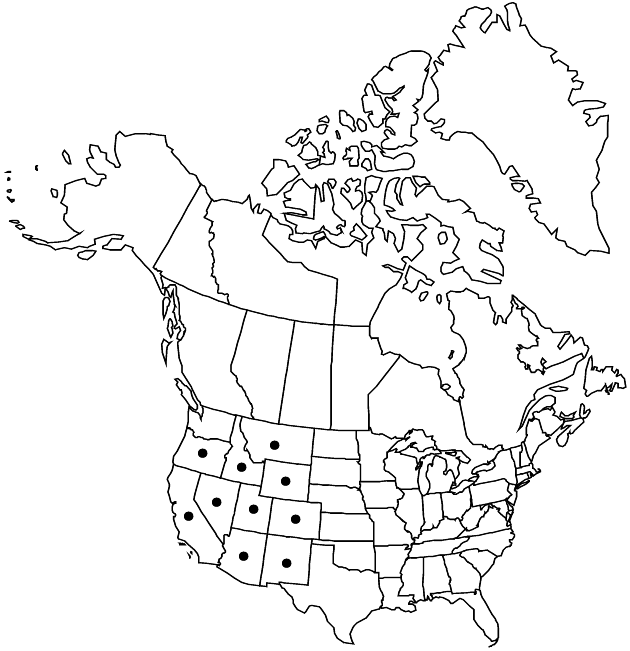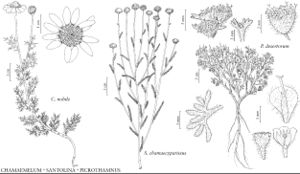Difference between revisions of "Picrothamnus desertorum"
Trans. Amer. Philos. Soc., n. s. 7: 417. 1841.
IllustratedEndemic
Synonyms: Artemisia spinescens D. C. Eaton
Treatment appears in FNA Volume 19. Treatment on page 499.
imported>Volume Importer |
imported>Volume Importer |
||
| Line 57: | Line 57: | ||
|publication year=1841 | |publication year=1841 | ||
|special status=Illustrated;Endemic | |special status=Illustrated;Endemic | ||
| − | |source xml=https:// | + | |source xml=https://bitbucket.org/aafc-mbb/fna-data-curation/src/2e0870ddd59836b60bcf96646a41e87ea5a5943a/coarse_grained_fna_xml/V19-20-21/V19_834.xml |
|tribe=Asteraceae tribe Anthemideae | |tribe=Asteraceae tribe Anthemideae | ||
|genus=Picrothamnus | |genus=Picrothamnus | ||
Latest revision as of 19:57, 5 November 2020
Stems diffusely branched from bases, some laterals ending in spinelike tips. Leaf blades or lobes orbiculate to linear, 1–5(–20) × 1–5(–20) mm. Phyllaries whitish green. Cypselae 1–1.5 mm. 2n = 18, 36.
Phenology: Flowering Apr–Jun.
Habitat: Arid slopes and valleys, sands or clays, sometimes saline soils
Elevation: 1800–2200 m
Distribution

Ariz., Calif., Colo., Idaho, Mont., Nev., N.Mex., Oreg., Utah, Wyo.
Discussion
Budsage provides nutritious forage for wildlife and domestic sheep in winter; it can be poisonous or fatal to calves and lambs, if consumed in great quantity during spring months.
Selected References
None.
Lower Taxa
None.
